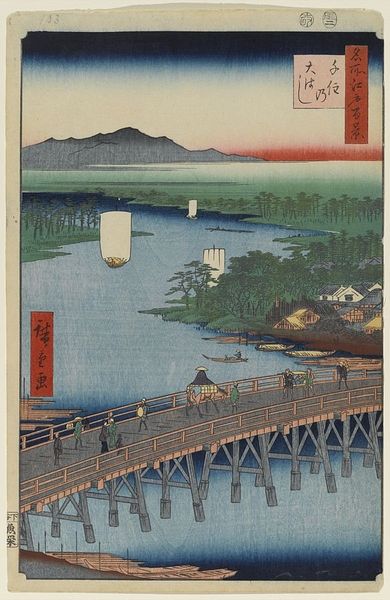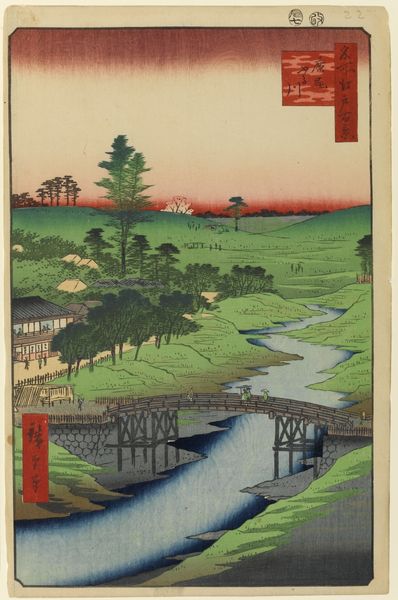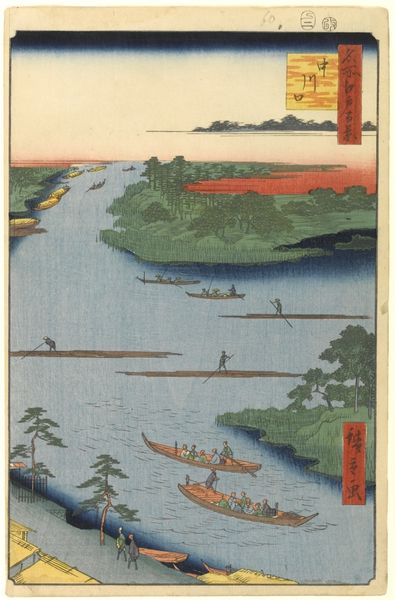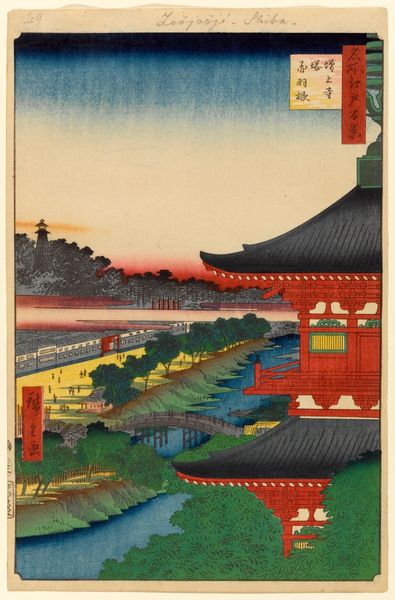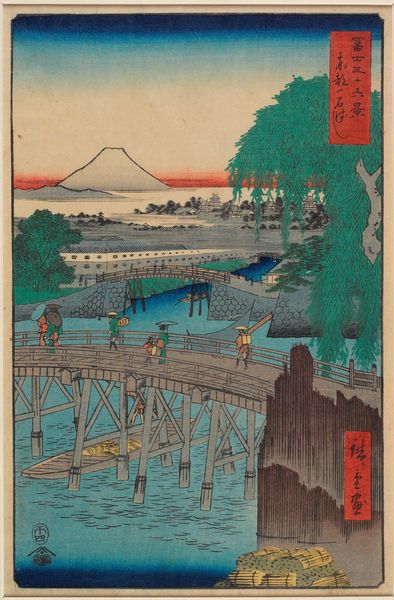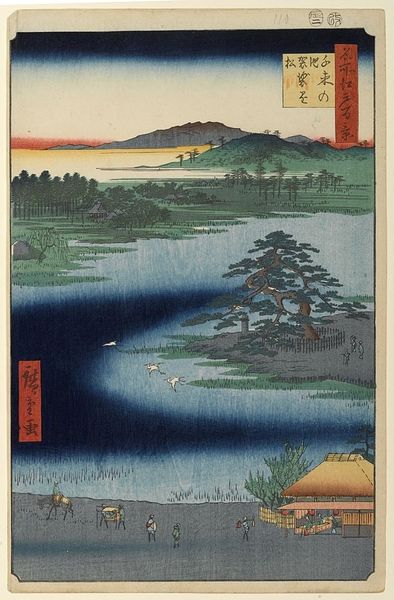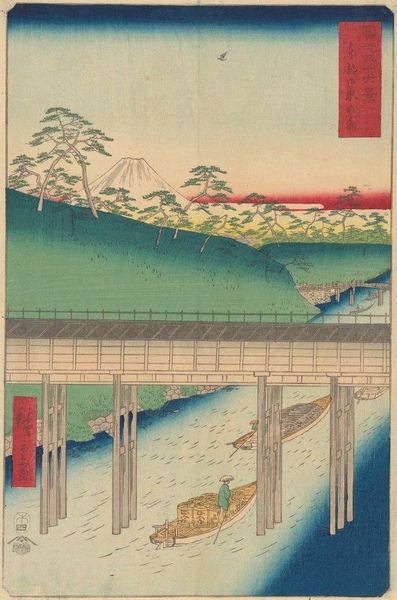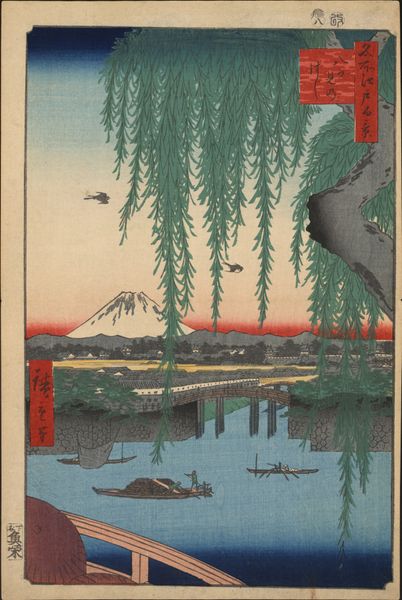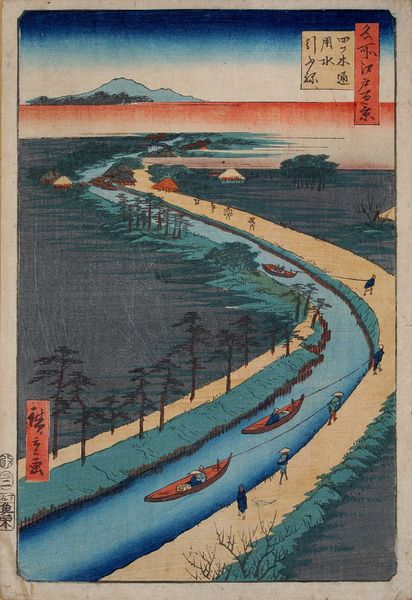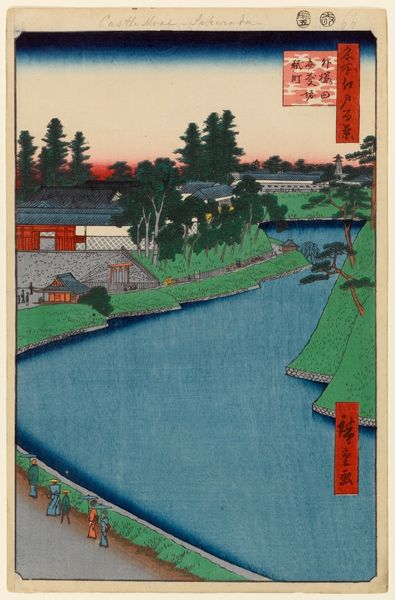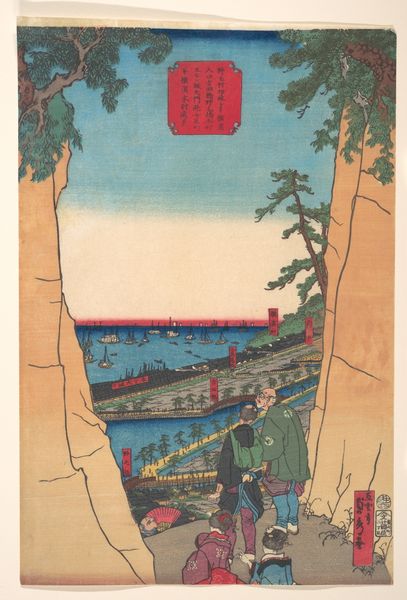
print, woodblock-print
# print
#
asian-art
#
landscape
#
ukiyo-e
#
woodblock-print
Copyright: Public domain
Editor: This is "116. Sugatami Bridge, Omokage Bridge and Jariba at Takata" by Utagawa Hiroshige, a woodblock print from 1857. The overwhelming use of yellows and reds gives the piece a rather fiery, almost unsettling atmosphere. How would you interpret its imagery? Curator: Notice how the arched bridge, prominently placed, acts as more than just a pathway? Bridges in art often symbolize transitions, connections between the earthly and spiritual realms, and even the passage of time. Here, the people crossing could be interpreted as traversing their own life journeys. What memories might such a scene evoke? Editor: I hadn't thought of the bridge as symbolic. It feels quite literal, part of the cityscape. Curator: Perhaps. But consider the composition: the red sky reflected in the water, the mountain silhouette, the tiny figures… All these elements point to something beyond the purely representational. The Sugatami, meaning "mirror-viewing," hints at self-reflection and perception. Do you see how Hiroshige might be inviting us to contemplate our place within this scene, and perhaps, within the world? Editor: I do now. It's as if the landscape mirrors the human condition, and the bridge is an opportunity for personal growth. Curator: Exactly. The beauty of Ukiyo-e lies in this ability to intertwine the everyday with the profound. Even a simple cityscape can hold layers of symbolic meaning that resonate across cultures and time. Editor: That gives me a lot to think about. It’s amazing how a print can encapsulate so much about a culture’s view of life and the journey we all share.
Comments
No comments
Be the first to comment and join the conversation on the ultimate creative platform.
